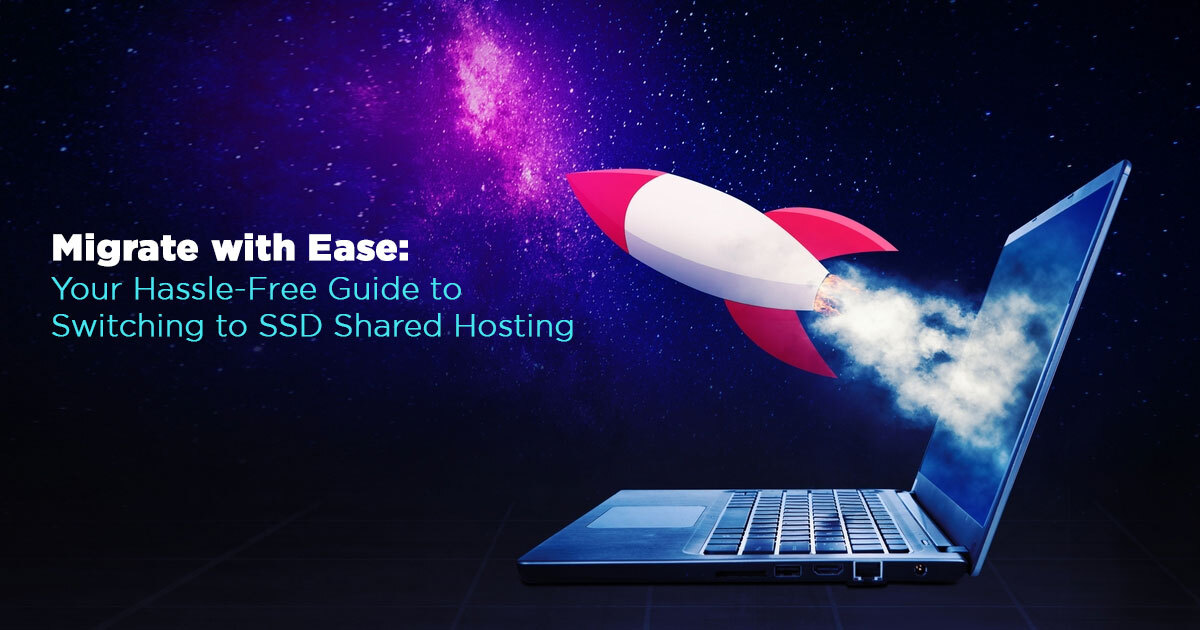
Are you tired of sluggish website performance, endless loading times, and the constant battle against slow servers? It might be time to make the leap and migrate to SSD-shared hosting.

In this comprehensive guide, we’ll walk you through the process of switching to SSD shared hosting seamlessly. Buckle up as we embark on a journey towards a faster, more reliable web hosting experience.
Understanding the Need for Migration
Before we delve into the how-tos, let’s address the elephant in the room: why bother with the hassle of migration? Well, imagine your website as a bustling city, and your hosting server as its infrastructure. Traditional hosting is like navigating through the city with horse-drawn carriages – slow, outdated, and prone to breakdowns. SSD shared hosting, on the other hand, is your sleek, high-speed train – cutting through the digital landscape with unmatched speed and efficiency.
Benefits of SSD Shared Hosting
- The speed that Stuns: The primary reason to switch to SSD shared hosting is speed. Solid State Drives (SSDs) are the F1 cars of storage technology, providing lightning-fast data retrieval. Your website will load quicker than a hiccup, providing visitors with an unparalleled user experience.
- Reliability Redefined: Say goodbye to the woes of server crashes. SSDs are more reliable and durable than traditional Hard Disk Drives (HDDs). They have no moving parts, reducing the risk of mechanical failure. Your website will be up and running 24/7, like a reliable old friend who never lets you down.
- SEO Boost: Google loves speed, and so do your visitors. A faster website not only improves user satisfaction but also boosts your search engine rankings. With SSD shared hosting, you’re not just upgrading your server; you’re giving your SEO a turbocharged kick.
The Migration Process Unveiled
Now that you’re sold on the idea of SSD-shared hosting, let’s talk about the migration process. It might sound daunting, but fear not – we’ve broken it down into manageable steps.
Step 1: Choose the Right SSD Shared Hosting Provider
Selecting the right hosting provider is like picking the right home. Do your research, read reviews, and ensure your chosen provider offers seamless migration assistance. Popular choices like Bluehost, SiteGround, and A2 Hosting are known for their excellent SSD-shared hosting services.
Step 2: Backup Everything
Before you make any move, create a comprehensive backup of your website. Think of it as packing your belongings before moving house. Most hosting providers offer backup services, but it’s always good to have an extra copy on hand.
Step 3: Update DNS Records
Your domain’s DNS (Domain Name System) records are like the street signs directing internet traffic to your website. Update these records to point to your new SSD shared hosting provider. This process might take some time to propagate, so be patient.
Step 4: Migrate Your Website Files
Now comes the actual move. Transfer your website files to the new hosting server. Many hosting providers offer tools and assistance for this process, making it smoother than sliding down a water slide.
Step 5: Test, Test, Test
Once the migration is complete, thoroughly test your website. Check for broken links, missing images, or any other anomalies. It’s like doing a final walkthrough of your new home to ensure everything is in place.
Common Concerns Addressed
Now, let’s address some common concerns you might have about migrating to SSD-shared hosting.
- Will my website’s data be safe during migration?
Absolutely. With proper backups and the assistance of reliable hosting providers, your data is in safe hands. Think of it as hiring professional movers for a smooth transition.
- What if I face technical difficulties during migration?
Most hosting providers offer 24/7 customer support. If you encounter any issues, reach out to them. It’s like having a tech-savvy friend on speed dial whenever you need assistance.
- Will my website experience downtime during migration?
Minimizing downtime is a priority during migration. With careful planning and the right hosting provider, you can keep downtime to a bare minimum – like changing a tire on a moving car.
- Is SSD shared hosting suitable for all types of websites?
Absolutely. Whether you run a blog, an e-commerce site, or a portfolio, SSD shared hosting can cater to various needs. It’s like having a versatile vehicle that adapts to different terrains.
- Does SSD shared hosting cost more?
While SSD shared hosting might have a slightly higher price tag, the benefits far outweigh the costs. It’s an investment in the future of your website, akin to upgrading from a basic phone to a high-end smartphone.
Conclusion
Switching to SSD shared hosting might seem like a big step, but it’s a leap towards a better online experience for both you and your visitors. The speed, reliability, and SEO perks make it a worthwhile investment. Follow the migration steps diligently, and soon you’ll be enjoying the digital fast lane.